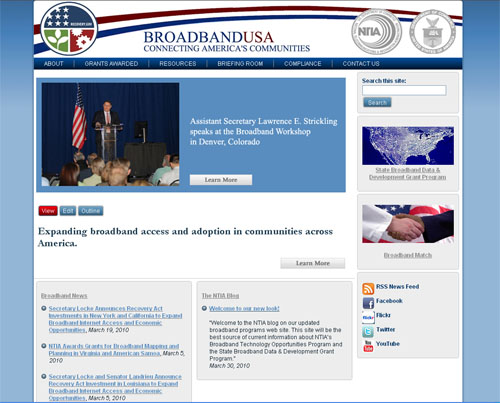Exploring the Digital Divide
NTIA and the Department of Commerce's Economics and Statistics Administration (ESA) recently released a report that analyzes broadband Internet adoption and use across the United States. “Exploring the Digital Nation,” the new study, finds that although socio-economic factors like income and education are strongly associated with broadband Internet use, they are not the sole determinants of adoption. Even after accounting for socio-economic factors, significant gaps in broadband adoption persist along racial, ethnic, and geographic lines. For example, White households had higher broadband adoption rates than African American and Hispanic households, and urban residents were more likely than their rural counterparts to adopt broadband Internet, even after adjusting for socio-economic factors.
Americans who did not use the Internet at all – whether inside or outside the home – most commonly cited lack of interest or need as the primary reason. In contrast, those who lacked the Internet at home but who did use it elsewhere most commonly cited affordability as the reason they were not subscribers, as did those who only had dial-up Internet access at home.
The report’s findings are based on data collected through a survey of approximately 54,000 households and 129,000 citizens – the largest survey of its kind. Commissioned by NTIA and conducted by the U.S. Census Bureau, the survey provides compelling information on the state of broadband Internet use across America, including an unprecedented level of examination of Internet adoption by persons with disabilities.
In addition, the report makes a pioneering use of regression analysis, adjusting the findings for socio-economic factors in order to achieve a greater understanding of the digital divide.

